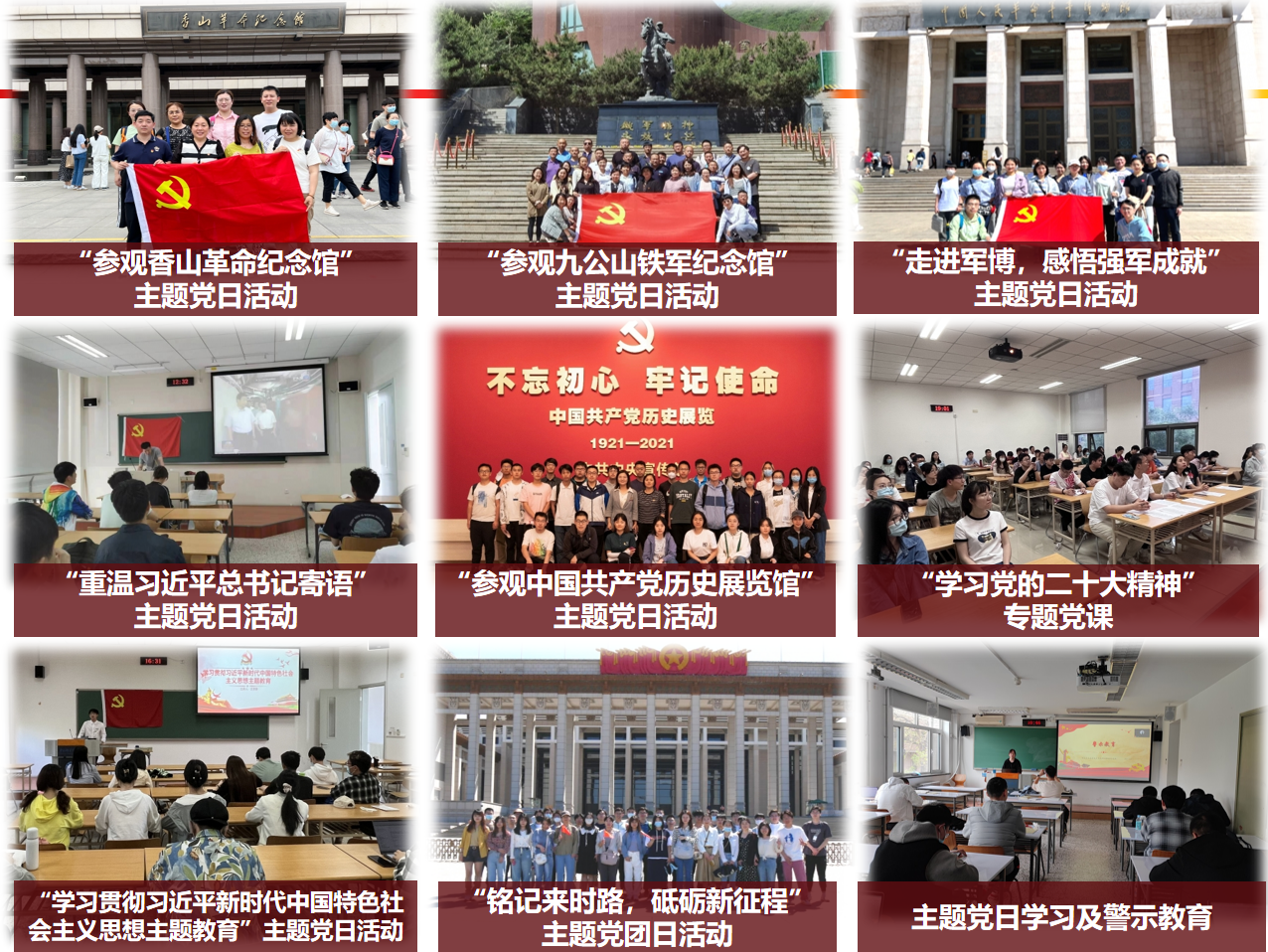打开故宫:UCASer的宫廷建筑艺术之旅



中国有一座城,叫做北京,
北京有一座宫殿,叫做故宫,
故宫有一个个历史故事,还有一个个中国智慧……


故宫向西20公里,有一所学校,中国科学院大学,
大学里有一门课程,中国概况(China Panorama),
依托课程有一个对外文化传播项目,“你好,中国”蓝飘带计划……




学校课堂上趣味生动的讲解,
课桌上3米长的立体缩放模型,
紫禁城里的实景游览和直接触摸,
国科大的留学生是这样了解中国、走进故宫的……
文化是一个国家、一个民族的灵魂。中国科学院大学曹志红副教授是“你好,中国”蓝飘带文化传播项目的负责人,也是留学生中国概况课的授课教师,每年她都这样带领留学生全方位、浸润式体验中国灿烂的历史文化。
座落在中轴线上的宫殿,象征皇权至上的81颗门钉,大殿前防火的水缸,屋脊上十全十美的瑞兽……故宫,这座辉煌的宫廷园林建筑艺术,无处不蕴藏着中国特色、中国智慧。作为我国古代宫廷发展史上现存规模最大、保存最完整的古代宫殿建筑群,故宫是中国首批被联合国教科文组织认定的世界文化遗产。“故宫建筑群既有深厚的历史价值,又有鲜明的艺术价值,其空间格局体现了中国传统礼制文化的规划理念,其园囿布置展示了中国古代宫廷园林的艺术成就,其建筑档案保存了中国古代营建制度和传统技艺的重要信息。”而故宫的文物藏品、历史遗存,以及在此出现过的人和事,和故宫建筑群一起,共同构成了不可分割的故宫文化整体,也是讲好中国故事、对外文化传播的中国名片。这也成为曹志红每年授课和文化建设项目必备的内容之一。
第一课堂和第二课堂的结合,给留学生们留下了深刻的印象。故宫文化之旅,让他们深刻体会了中国文化的博大精深和中国技艺的巧思绝妙。

Asma Sabir在故宫的护城河边
来自巴基斯坦的博士生Asma Sabir说:“作为国科大的新生,参观故宫是我一生最难忘的经历。雄伟的宫殿建筑、丰富的历史文化,以及神秘的宫廷故事,这一标志性的中国地标永远留在我的记忆中。”“穿过宏伟的宫门,踏入故宫的广阔空间,彷佛一下子穿越回那个天人合一的时代。漫步在庭院之间,穿越宽阔的广场,我欣赏着这座独特的中国传统建筑。精美的屋脊和屋脊上的瑞兽,与宁静的花园和美丽的亭台相得益彰。在这里,曹老师为我们讲述的那些故事和知识都一一呈现,我真的太享受这样的课程和旅程了!”

太和殿前的Yousaf Khan

Yousaf Khan介绍太和殿前水缸的作用
Yousaf Khan则被故宫深厚的历史底蕴所震撼,他感叹道:“参观故宫就像翻阅一本中国的历史书籍,每一个转角都翻开了新的一页。来到故宫才理解了曹老师课堂上介绍的知识。紫禁城的布局深植于中国的宇宙观和哲学智慧,从南面的午门到北面的神武门,一条无形的线构成了北京市中轴线的基础,象征着天地间的和谐,让人颇感兴趣。尤其是太和殿的雄伟气势,简直美不胜收!”除此之外,他还准确地记住了:太和殿前的水缸是用来盛水以防火的!

Ghulam Raza Khan在故宫御花园
在整个行程中,博士生Ghulam Raza Khan都在认真地感受着这座古老的城池,他在自己的游记中写道:“紫禁城代表的不仅是一个历史地点,更是过去缤纷交织的生活。静静的金水河让人沉静,与宏伟的建筑形成鲜明的对比。闲适的御花园,专为皇家设计,漫步其中,怡然自得。它的功能不仅仅是休闲之所,更是所有历史故事的见证。整个行程中,曹教授用她饱满的热情和专业的知识将每一块石头、每一条回廊背后的故事都栩栩如生地呈现出来,带领我们穿越时空,帮助我们理解紫禁城所承载的中国历史、中华文明和中国建筑,她将一次旅行成功地转变为一场饶有趣味的学习。真的很感谢中国科学院大学为我们提供的机会,如此美好!”

沙飞(Shah Faisal)介绍三大殿名称

Ghazala Latif在故宫的护城河边

Muhammad Umar Mushtaq在故宫的护城河边

Saad Ullah在故宫的护城河边
有着地道中文名字的博士生沙飞(Shah Faisal)非常骄傲自己在这次旅程中收获了很多知识,尤其是牢固地记住了很多的“故宫小贴士”,每当老师问起,他都信手拈来,如故宫前朝三大殿的名字是太和殿、中和殿、保和殿,再如水缸是用来防火的,还有午门上的门钉是九九八十一颗……每一个角落都让他不断感慨故宫六百年的历史。
Ghazala Latif则认为中国的历史确实非常悠久,但更重要的是,中国以这样的方式保留着历史,这是一件非常值得骄傲的事。Muhammad Umar Mushtaq和Saad Ullah都觉得这次故宫之行太难忘了,尤其是曹老师深入浅出的讲解,不仅带给他们欢笑,还时常穿插着知识问答,让他们在快乐中学习,轻松记住中国的文化知识。

乔奈(Kyaw Nyein)在太和殿前
来自缅甸的博士生乔奈(Kyaw Nyein)也很感慨:“参观故宫简直太棒了!将中国历史、中国文化、中国建筑融为一体!”他还介绍了故宫另一个名称的由来:“故宫又称为紫禁城,修建于明朝1406-1420年间。紫禁城这个名称来自中国星象学中位于中天的紫微垣,也就是北极星,那是天帝居住的地方,天人对应,所以皇帝居住的地方称为紫禁城。”

Artem Iliasov在太和殿广场
俄罗斯籍的博士生Artem Iliasov在参观中不仅惊叹“故宫的规模简直太壮观了”,还感叹中国人的热情。除此之外,他还注意到北京与莫斯科、故宫与克里姆林宫的相似之处,他说道:“北京和莫斯科都是两个国家的政治中心城市,在布局上也有相似之处,比如故宫和克里姆林宫都位于城市的中心,都有宽阔的活动广场——天安门广场和红场,也都有河水环绕。”
讲不完的课堂,数不尽的欢笑,打开的是知识,记住的是智慧,国科大的留学生就是这样走进中华优秀传统文化的!
留学生的行记或絮语:
GHULAM RAZA KHAN 巴基斯坦
中国科学院大学-中国科学院城市环境研究所 博士生
ExploringtheForbiddenCity
The Forbidden City is a special place in the packed heart of Beijing. This massive 178-acre site has attracted people all over the world since it was originally constructed in the year 1406 by the Ming Dynasty's Yongle Emperor and was formally opened in 1420. Exploring this imperial wonder as a foreign student was the complete highlight of our educational experience, bringing delight with each journey through its beautiful entrances.
Our journey got started at the Meridian Gate, an impressive entrance to a world rich in imperial history. There was a large square beyond it with five bridges resulting to the remarkable Gate of the Hall of Supreme Harmony. The Inner Golden Water River ran beneath these bridges, telling stories about how only the Emperor could cross the central bridge. The Gate of Hall of Supreme Harmony, safeguarded by the bronze medal lions, displayed the dynastic power of China. The Hall of Supreme Harmony was the place used by Ming and Qing dynasties for imperial weddings and enthronements. It wasn't just a historical site; it was like walking into a living art of royal power and incredible architecture.
The excitement continued as we learned about the mysterious emperor, who was a bit hard to meet. The Hall of Central Harmony, where the emperor took a break on his way to the Hall of Supreme Harmony, turned into a stage for the interesting rituals. It was where big decisions were made, and everything was carefully planned.
Our journey then took us to the Hall of Preserved Harmony, a historical site. For significant ceremonies, Ming emperors wore special clothing. There were exciting gatherings in this hall during the Qing Dynasty, illustrating how the Forbidden City transformed over time.
The Forbidden City wasn't simply a place from the past; it was a colorful weaving of life. The Golden Water River flowing through the area gave a peaceful touch, making an appealing contrast to all the grand structures. Moving around through the Imperial Garden, designed for emperors to relax and remain fit, we loved how it served two functions - a calm place to calm down and a spot for memorable events. Professor Cao, whose enthusiasm and expertise brought every stone and corridor to life, guided us through this incredible adventure, helping us to understand the history, and civilization, and architecture of the Forbidden City, transforming it from a tourist attraction into an exciting part of our learning.
This trip went above and beyond what we learned in our China Panorama session. We'd like to express our gratitude to the University of Chinese Academy of Sciences (UCAS) that helped to make this trip possible. Professor Cao and the welcoming Chinese people made our visit to the Forbidden City memorable. The Forbidden City formed a part of our memories with each gracefully, a shining symbol of imperial power that would live on in our hearts forever.
YOUSAF KHAN 巴基斯坦 博士生
中国科学院大学 中国科学院大连化学物理研究所
A Trip to Forbidden City
Visiting the Forbidden City in Beijing was an experience that felt like stepping through the pages of history. As we walked through the vast complex of palaces and gardens, it was impossible not to be awed by the sheer scale and beauty of this architectural marvel. With every turn, there was a new wonder; the intricate designs and vibrant colors of the roofs contrasted against the grey bricks of the walls that have stood the test of time. It was like wandering in a living museum, each hall and courtyard telling its own story of emperors, court life, and the grandeur of dynastic China. As foreign students, we were fascinated by the rich cultural heritage and how every carved dragon and phoenix had a meaning beyond mere decoration.
Our best teacher, Prof. Cao (Jitta laoshi), who arranged the trip, was an excellent guide, in explaining the significance of the Forbidden City's layout, which is deeply rooted in Chinese cosmology and philosophy. It was intriguing to learn how the city's central axis aligns with the Meridian Gate to the south and the Gate of Divine Might to the north, symbolizing the harmony between heaven and earth. The highlight of the day was the Hall of Supreme Harmony, which left us speechless with its majestic atmosphere and the stories of the grand ceremonies once held there. The laughter and chatter among us students echoed through the courtyards as we immersed ourselves in the cultural tapestry of the Ming and Qing dynasties. Despite the language barriers and cultural differences, we all shared a sense of wonder that transcended our diverse backgrounds.
As the day drew to a close and we left the former imperial palace, we carried with us a deeper appreciation for China's history and culture. This trip was not only educational but also a feast for the senses, and we are grateful for our teacher's efforts in organizing this memorable excursion. It was a joyful journey that brought our class closer together, and the experiences we shared will be treasured memories for years to come. We would like to extend our heartfelt thanks to our teacher for this incredible opportunity to connect with a pivotal part of China's past. Your guidance made the Forbidden City come alive for us, and for that, we are endlessly appreciative. Thank you for an unforgettable trip.
KYAW NYEIN 缅甸 博士生
中国科学院大学 中国科学院植物研究所
We visited The Forbidden City for the China Panorama course with Professor Cao. At that time, I had an amazing feeling about Chinese history, Chinese traditional cultures, architecture, and so on. The Forbidden City is one place to visit. which was made to be the Chinese imperial palace and the winter residence during the Ming dynasty. It was built between 1406-1420 and lasted from the Ming dynasty to the collapse of the weak Qing Dynasty in 1924. In ancient China, it was called the Forbidden City (Chinese: 紫禁城;Literal translation: ‘Purple Forbidden City’). Translation, Purple Forbidden City, but the forbidden city is all yellow and red, so why use the ‘Purple’? As Professor Cao introduced that it comes from Polaris. In ancient China, Polaris was called Purple Star, it was in the center of the sky. It represented that the Emperor was arranged by the gods to manage the people, and demonstrated the legitimacy of the Emperor’s status. So, it uses the ‘Purple’. Tradition says that its design famously incorporates 9,999.5 rooms. Only the celestial Lord of Heaven, not his imperial son on Earth, could enjoy 10,000. Nonetheless, the number 9,999 is auspicious in Chinese culture, associated with the emperor, and pronounced the same as the Chinese word “eternal.” So I would like to Thank to Professor Cao ( China panorama course) to give us such nice course and trip.
SHAH FAISAL 巴基斯坦籍博士生
中国科学院大学-中国科学院大连化学物理研究所
大家好,
我叫Shah Faisal,
我的中文名字是沙飞,
我来自巴基斯坦,
我是二零二三级的学生,
We have visited the forbidden city, it is located in Beijing, China, it is an architectural marvel steeped in history and significance. Today, it stands as one of China's most iconic landmarks and a must-visit destination for tourists seeking to immerse themselves in the country's rich cultural heritage.
From our visit I remember it comprises three main big halls, including Tai he Dian, Zhong he Dian, and Bao he Dian, it served as the epicenter of imperial power for six centuries. Also, outside of the building there were big vats that was used for storing water because all the buildings were constructed of woods so if there was a fire somewhere, then that water would be used to take off the fire.
Also, I noticed there were 81(9 × 9) buttons on its doors which symbolizes the emperor's authority and highlights the meticulous attention to detail in its design.
Thankful
ARTEM ILIASOV 俄罗斯籍 博士生
中国科学院大学
The scale of the palace is, of course, impressive! We walked for several hours and didn’t have time to see everything. There were a lot of people, despite it being a weekday and sub-zero temperatures. Several times people came up to us to ask what country we were from, and upon hearing: “Elos” (Éluósī,俄罗斯), they answered: “Russia is our friend” and “Putin is very good.”
Yes, Moscow and Beijing are similar. Only in Moscow it is colder. And in Beijing, the roads form squares around the city center, and in Moscow they form circles. These are both very green cities, lots of trees and flowers. In the center of Moscow there is Red Square and the ancient Kremlin. The Kremlin was the residence of the Russian tsars. The Kremlin in its modern form was built in the 15th century. In Beijing, the Forbidden City is also next to Tiananmen Square. In Moscow, military parades are also held on Red Square. The walls of the Moscow Kremlin and the Forbidden City are both red. In both cases, a river flows next to these structures.





